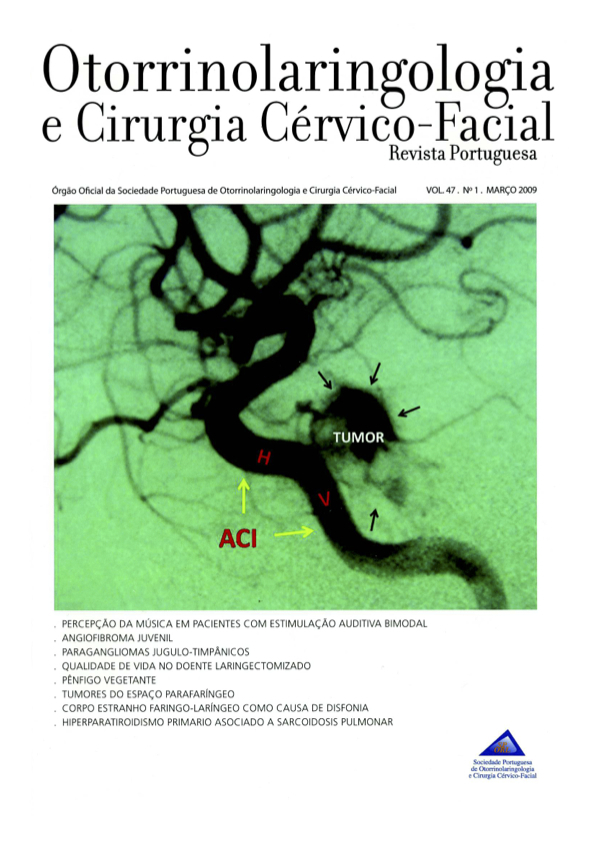Pharyngolaryngeal foreign body as cause of disphonia
DOI:
https://doi.org/10.34631/sporl.38Keywords:
Foreign body, fish bone, pharynx, larynx, radiography, computed tomography, migration, complicationsAbstract
Ingestion and impactation of foreign bodies in the upper aerodigestive tract is a common ENT emergency In adults, fish bones are the most frequently encountered foreign bodies. A careful history and a accurate examination are of paramount importance. Symptoms include odynophagia, dysphagia, persistent cough, voice alteration, excessive drooling and, less commonly respiratory distress. The commonest site for a fish bone to impact is the supra-hyoid area. Less common sites of impactation are the hypopharynx, cricopharyngeal region and esophagus, being the diagnosis more difficult in these areas. Extraluminal migration happens rarely being more common in the presence of a fish bone. According to its shape, this is the foreign body that more easily migrates and consequently presents the biggest rate of complications. In this situation, a high index of suspicion is needed, being fundamental the realization of a CT The authors present a case of migration of a fish bone in the laryngeal ventricular band and an algorithm showing a diagnosis and treatment strategy for managing a perforating and migrating foreign body.






